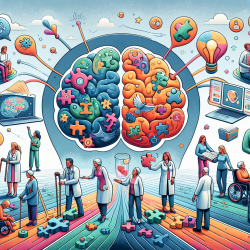Empowering Educators: Bridging the Genetics Education Gap
In today's rapidly advancing scientific landscape, the field of genetics has expanded beyond traditional boundaries, incorporating genomic concepts that are vital for understanding modern biology. However, a recent study titled "A Comprehensive Analysis of High School Genetics Standards: Are States Keeping Pace with Modern Genetics?" reveals that many state standards are not keeping up with these advancements. This blog post explores how educators can leverage these findings to enhance their teaching strategies and foster a deeper understanding of genetics among students.
The Current State of Genetics Education
The research conducted by Dougherty et al. (2011) highlights a significant gap in the quality of genetics education across the United States. The study assessed the genetics standards of all 50 states and the District of Columbia, using core concepts developed by the American Society of Human Genetics as benchmarks. Alarmingly, over 85% of states received scores indicating that their standards were inadequate. Key areas of concern included the omission of concepts related to genetic complexity, environmental influences on phenotypic variation, and differential gene expression.
Opportunities for Educators
Despite these challenges, educators have a unique opportunity to bridge this gap by integrating modern genetic concepts into their curricula. Here are some strategies educators can consider:
- Incorporate Genomic Concepts: Introduce students to the complexities of genomics, including polygenic traits and the role of the environment in gene expression. This will help students understand the intricacies of genetic variation and its implications for health and disease.
- Utilize Online Resources: Platforms like TinyEYE offer online therapy services that can be adapted to support genetics education. Educators can use these resources to provide interactive learning experiences that enhance students' understanding of complex genetic concepts.
- Encourage Critical Thinking: Develop lesson plans that challenge students to think critically about genetic information. This can include analyzing case studies, exploring ethical implications, and discussing the impact of genetics on society.
- Stay Informed: Attend conferences, webinars, and workshops to stay updated on the latest developments in genetics education. Networking with other educators can provide valuable insights and resources for improving teaching practices.
Encouraging Further Research
While implementing these strategies can significantly enhance genetics education, it is also crucial for educators to engage in ongoing research and professional development. By staying informed about the latest advancements in genetics, educators can continuously refine their teaching methods and ensure that their students receive a comprehensive and up-to-date education.
Conclusion
In conclusion, the findings of the study underscore the need for improved genetics standards in high school education. By incorporating modern genetic concepts into their curricula and encouraging critical thinking, educators can empower students with the knowledge and skills necessary to navigate the complexities of modern genetics. To read the original research paper, please follow this link: A Comprehensive Analysis of High School Genetics Standards: Are States Keeping Pace with Modern Genetics?










